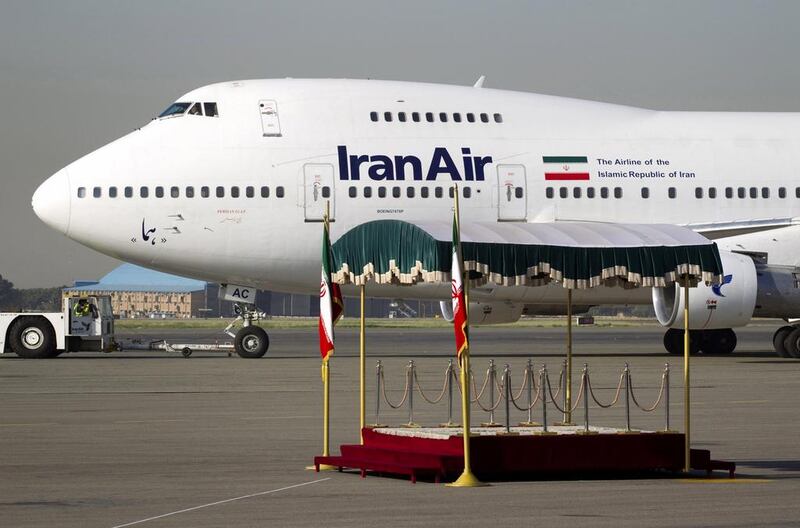Trapped in isolation with outdated planes, Iran Air – a carrier dragged down by decades of economic restrictions – finally felt a gust of hope last week thanks to the international nuclear accord and a potential lifting of sanctions.
Once the deal is implemented, the Islamic republic will be able to replace its vintage aircraft, some of which are almost 30 years old.
But while some analysts feel optimistic for the airline’s future, saying it could revive its glory days after an overhaul, others are less hopeful. They say Iran Air is too late to the game, as Arabian Gulf airlines already serve the Iranian market effectively.
“For many years the Arabian Gulf carriers have offered Iranians the only way to get around the world,” said Addison Schonland, a founder and partner of the US-based commercial aviation consultancy AirInsight. “[But] once sanctions are dropped and Iranians can fly on their home carriers, I expect to see the connecting traffic through Dubai and other points fall off considerably.”
Lifting sanctions could open the door to safer aircraft for Iranians – a substantial benefit to passengers and the carrier, whose safety record in recent years leaves much to be desired.
In 2010, the European Commission said it would ban all of Iran Air's Airbus A320, Boeing 727 and Boeing 747 fleet from the European Union due to safety reasons. But thanks to Tuesday's nuclear deal, business with the republic could once again become a reality, with plane manufacturers eager to serve the abandoned market.
“I think Iran Air will see the aircraft OEMs [original equipment manufacturers] eager to help with fleet updates. Both sides are eager for this. Besides, the Iranians deserve safer aircraft to fly on,” said Mr Schonland.
The country needs about 400 passenger planes to modernise its fleets, which would cost about US$20 billion, Abbas Akhoundi, Iran’s roads and transport minister, said last month at the Paris Air Show.
The airline has a fleet of 43 planes, according to the Iran Air website.
However, some experts were pessimistic about the airline’s fortunes after nearly four decades of lost opportunities because of restrictions placed on the carrier since the Iranian revolution in 1979.
“Iran Air doesn’t have much hope,” said Richard Aboulafia, the vice president for analysis at Teal Group, a US-based consultancy.
“Even if Iran Air reforms itself, the big Gulf carriers have enormous advantages – great service, great route networks, strong brands, strong maintenance procedures, great marketing and great products.”
Between Etihad, Emirates, Air Arabia and flydubai, the Iranian market is substantially covered. Emirates offers four daily flights between Dubai and Tehran. Its sister budget airline, flydubai, serves 10 cities in Iran, including Mashhad, Ahwaz, Bandar Abbas, Esfahan and Shiraz.
“With a population of more than 80 million people, Iran – which is in our geographic focus – remains an untapped market with much potential,” said a flydubai spokesman.
With its modern long-haul fleet, Emirates has been tapping into Iranian communities in the United States, United Kingdom and the Netherlands, connecting them to their home country through Dubai. The carrier this month said it would fly to Mashhad from September.
“The competitive airlines outside Iran have planned for this sanctions news. They can push fares down and make it hard for Iranian airlines to get going,” said Mr Schonland. “But in the end, this could boost traffic numbers – a rising tide lifts all ships. Dropping sanctions opens all kinds of new doors and windows. There is good news for many. But not good news for all,” he added.
selgazzar@thenational.ae
Follow The National's Business section on Twitter





